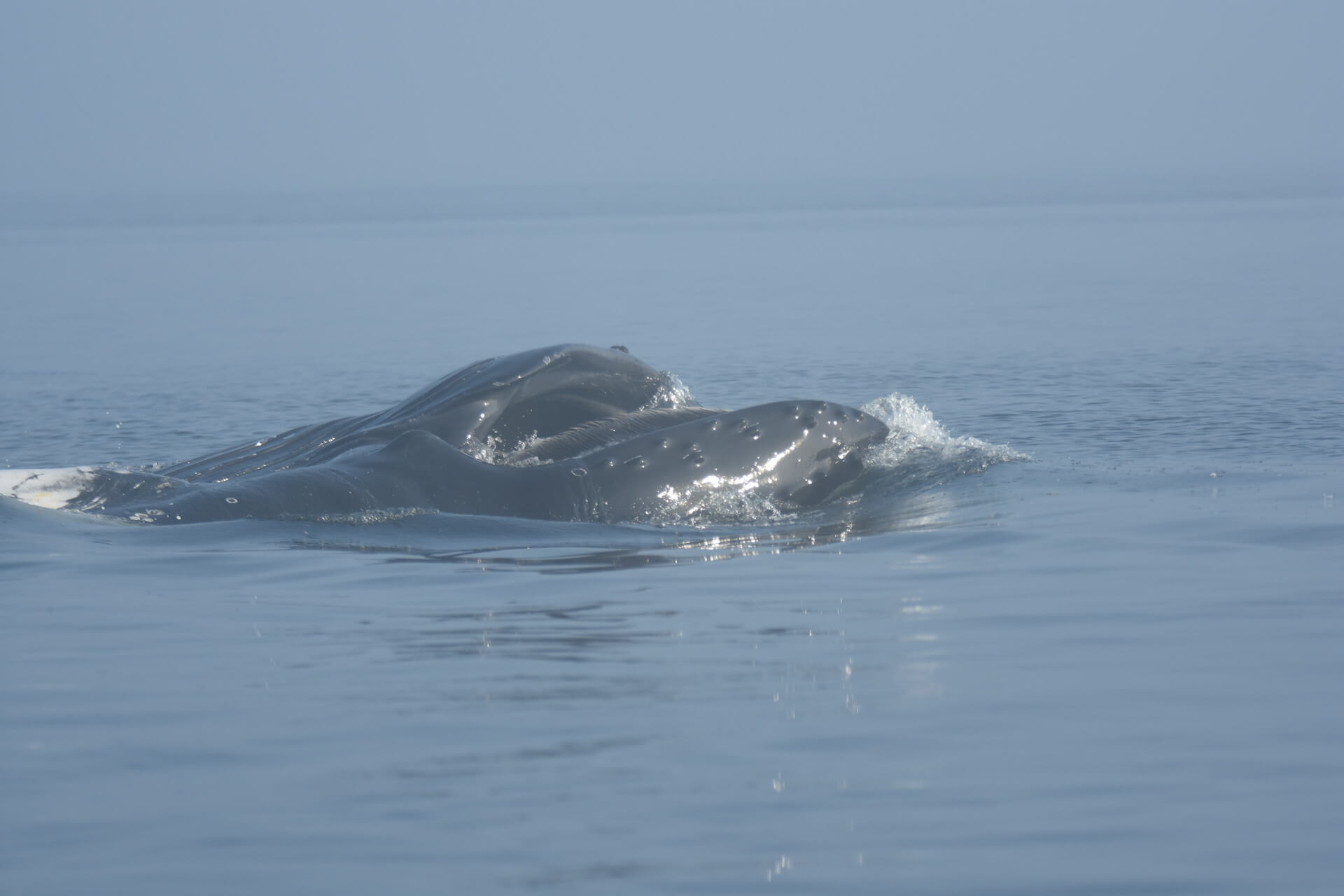Approximately 90% of humans are right-handed, preferring to use their right hand for writing and carrying out daily tasks, while a mere 10% consider themselves to be left-handed. But what about whales? Are they more ‘right-handed,’ ‘left-handed,’ or are they ambidextrous? We get this question periodically from visitors to the interpretation centre.
A number of studies carried out on different species seem to indicate that the majority of whales are right-handed, like humans. But that doesn’t mean they’d be more inclined to hold their pencil in their right fin! In reality, determining the preferred side of a whale is not as simple as it might seem.
Wounds that speak volumes
How can we determine the degree of lateralization in whales? Namely by looking at whether they prefer to use one side of their body to carry out daily activities such as foraging.
Researchers have observed that nearly 9 out of 10 humpback whales adopt a right-biased behaviour when feeding near the ocean bottom. How exactly was this determined? By observing whether these whales have asymmetrical markings on their jaws. Wounds on the right side of the rostrum or mandible, for example, would suggest that the whale has a habit of rolling onto its right side to hunt prey near the sea floor.
Port or starboard?
For species that are more accustomed to feeding in the water column, we can determine whether they favour one side by observing their turns. In toothed whales, laterality is visibly present. In the Bahamas, the common bottlenose dolphin seems to adopt a consistent directional movement during its foraging activities. Indeed, before diving to feed in the craters, it seems to prefer to turn to the left 99% of the time.
The same goes for the finless porpoise in Japan, which also spins counter-clockwise, with the right side facing downward, when hunting fish near the water surface.
Surprisingly, blue whales seem to favour different orientations depending on what they are doing. A study that analyzed their behaviour using motion sensors reveals that the majority of blue whales turn to the right when hunting in deep water. However, when these whales ascend to hunt prey at shallower depths, they complete a 360-degree rolling manoeuvre to the left.
Right eye dominant
Why do whales, especially blue whales, not always turn in the same direction? The dominance of the animals’ right eye might explain these seemingly contradictory behaviours. Indeed, regardless of their movements, whales seem to strive to keep their right eye focused on their prey, which would make them right-handed. Even the common bottlenose dolphin, which prefers to turn to the left, is believed to be right-handed, since it keeps its right eye and the right side of its body close to the sea floor to better locate and discriminate its prey.
In the case of toothed whales, lateralized behaviour might also be attributable to other factors such as echolocation. Indeed, toothed whales are believed to better perceive echolocation signals coming from the right, which might also explain some of their directional movements.
Lateralization behaviours observed in whales – which amongst other things allows them to maintain visual contact with their prey thanks to a dominant eye – often aim to optimize foraging and predator defence strategies. Is the preference for one side of the body over another hereditary? Or is this a behaviour acquired by mimicking the gestures of the parents? Scientists don’t yet have the answer to these questions.








